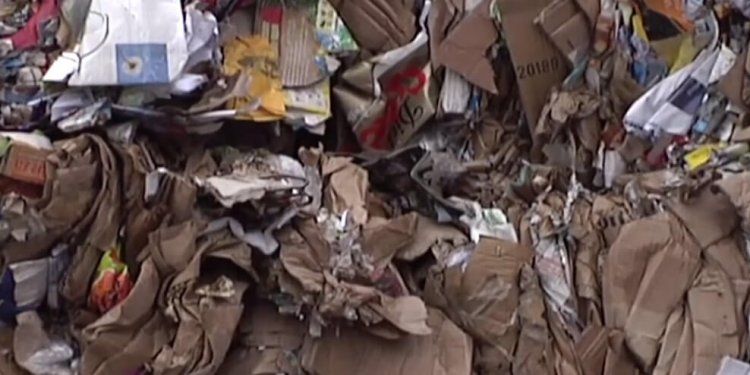
Cardboard Waste Disposal
In a lifetime the average American will throw away 600 times the amount of his or her adult weight in garbage. For example, a 150 pound adult will leave a trash legacy of 90, 000 pounds.
We're Running Out of Landfill Space
By the year 2003, 200 California landfills will close. The County of Ventura has traditionally relied on one local landfill for waste disposal.
Recycling Makes Sense
Unlike landfills (which simply stockpile trash) recycling removes waste completely, then turns it back to useful products. Recycling saves money, and in turn reduces the amount of trash going to the landfills.
ALUMINUM RECYCLING
Recycling one ton of aluminum:
Saves 14, 000 kWh of energy
Saves 39.6 barrels (1, 663 gallons) of oil
Saves 237.6 million Btu's of energy
Saves 10 cubic yards of landfill space
Aluminum Recycling Tips
- Prepare aluminum cans for recycling by either crushing the cans to save space or leaving them uncrushed.
- Cans that are rinsed out will have little or no odor and are less likely to attract bugs.
Did You Know?
- Recycling aluminum takes 95% less energy than making aluminum from raw materials.
- Two out of three aluminum cans were recycled in the United States in 1995.
- The industry is also helping to conserve aluminum resources through a process called lightweighting. Fewer materials are used in the aluminum can so fewer resources are extracted. In 1992, the aluminum can weighed 24% less than a can designed in 1972. Where it once took 22 cans to make a pound, it now takes 30 cans to make a pound.
CARDBOARD RECYCLING
Recycling one ton of cardboard:
Saves 390 kWh of energy
Saves 1.1 barrels (46 gallons) of oil
Saves 6.6 million Btu's of energy
Cardboard Recycling Tips
- Prepare cardboard for recycling by removing all other materials in the box such as plastic wrap, polystyrene peanuts and other packing materials.
- Break down cardboard boxes to save storage space.
- Try to keep cardboard dry and free from food waste. Cardboard can get wet and still be recycled, but is more difficult to carry due to the added weight of the water.
- Recycling one ton of cardboard saves over 9 cubic yards of landfill space.
- Recycled cardboard saves 24% of the total energy needed for virgin cardboard.
GLASS RECYCLING
Recycling one ton of glass:
Saves 42 kWh of energy
Saves 0.12 barrels (5 gallons) of oil
Saves 714, 286 Btu's of energy
Saves 2 cubic yards of landfill space
Saves 7.5 pounds of air pollutants from being released
Glass Recycling Tips
- Prepare glass containers for recycling by rinsing out with water.
- Labels on glass containers do not have to be removed because they are removed during the crushing process and/or burned off during the melting process.
- Avoid breaking the glass and mixing broken colors together as this may make the glass unacceptable for recycling.
- Waste Management-Recycle America offers a service known as Container Recycling Alliance (CRA) which is a national recycling organization for recovering glass containers, including clear, brown and green bottles and jars. The CRA features state-of-the-art fully automated ceramic detection and color sorting equipment, as well as full bottle destruction and decasing capabilities.
- Recycling glass saves 30% of the energy required when producing glass from raw materials (soda, ash, sand and limestone). Crushed glass, called cullet, melts at a lower temperature than the raw materials, which saves energy.
- The United States throws away enough glass bottles and jars to fill a 1, 350 square foot building every week.
- Refillable glass bottles use 19, 000 Btu's of energy as compared to 58, 000 Btu's used by throwaway glass bottles.
NEWSPRINT RECYCLING
Recycling one ton of newsprint:
Saves 601 kWh of energy
Saves 1.7 barrels (71 gallons) of oil
Saves 10.2 million Btu's of energy













